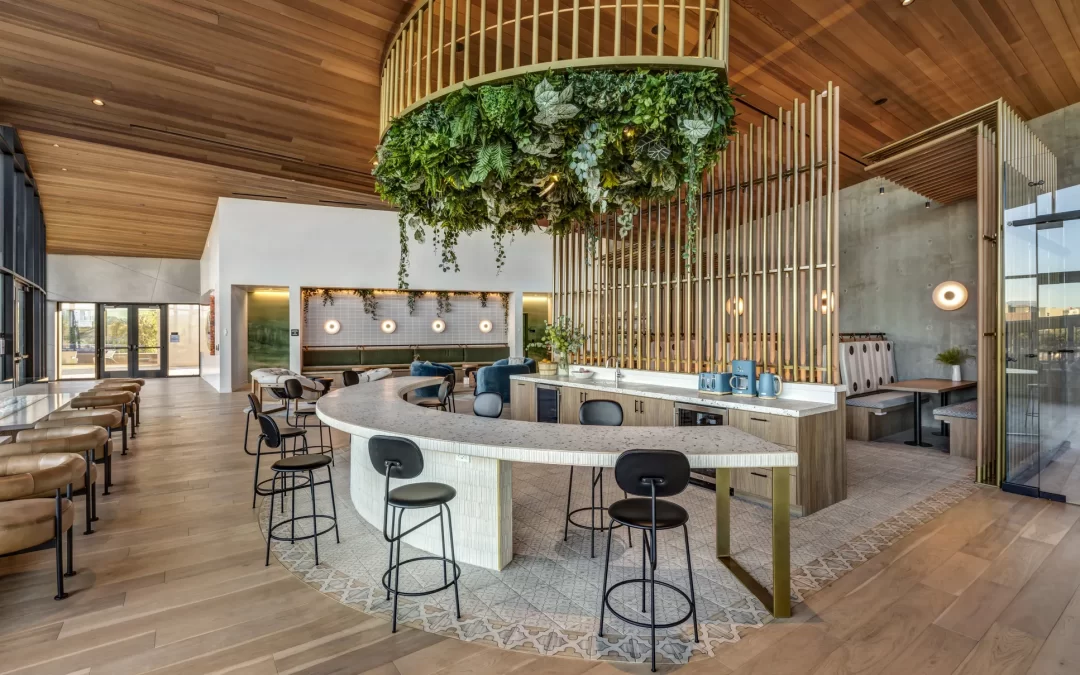Projection Mapping for Dynamic Decor
Imagine walking into a room where the walls come alive with swirling galaxies, shifting textures, or storytelling visuals that change with your mood. This is the magic of projection mapping for dynamic decor. It’s more than just decoration—it’s an immersive experience that transforms ordinary spaces into extraordinary environments.
Projection mapping, also known as spatial augmented reality, uses projectors to cast visuals onto surfaces, turning them into dynamic canvases. Unlike traditional decor, it’s fluid, adaptable, and capable of telling a story that resonates with the viewer. For interior designers and brands, it’s a game-changer, offering endless possibilities to create spaces that leave a lasting impression.
What is Projection Mapping?
At its core, projection mapping is a technique that uses projectors to display images or videos onto real-world surfaces. These surfaces can be anything—walls, floors, ceilings, furniture, or even irregularly shaped objects. The magic lies in the software that adjusts the visuals to fit the contours of the surface, creating a seamless and immersive experience.
Think of it as painting with light. But instead of static images, projection mapping brings motion, depth, and interactivity to the mix. It’s like turning your space into a living, breathing art installation that can change in an instant.
Benefits of Projection Mapping in Interior Design
Projection mapping isn’t just a cool trick—it’s a powerful tool that offers a range of benefits for interior design and branding:
-
Flexibility and Adaptability
Unlike traditional decor, projection mapping allows you to change the look and feel of a space instantly. Want a serene, nature-inspired backdrop for a yoga studio? Done. Need a bold, futuristic vibe for a product launch? No problem. -
Immersive Storytelling
Projection mapping creates a narrative that engages the senses. It’s perfect for brands that want to communicate their vision or mission in a memorable way. -
Cost-Effective Updates
Instead of redesigning a space, you can update it with new visuals. This makes it ideal for seasonal themes, special events, or evolving brand identities. -
Endless Creativity
The only limit is your imagination. From abstract art to realistic simulations, projection mapping opens up a world of creative possibilities. -
Enhanced Customer Experience
It creates a wow factor that leaves a lasting impression, making it perfect for retail spaces, restaurants, and hospitality environments.
Practical Uses of Projection Mapping
Projection mapping isn’t just for grand events or museums—it’s versatile enough to enhance everyday spaces. Here are some practical applications:
-
Retail Spaces
Elevate shopping experiences by projecting product stories, interactive visuals, or seasonal themes onto walls and displays. -
Restaurants and Cafes
Create ambiance with dynamic visuals that change throughout the day, from a sunny breakfast vibe to a cozy, candlelit dinner setting. -
Offices and Workplaces
Use projection mapping to inspire creativity, display company values, or create immersive meeting rooms. -
Event Venues
From weddings to corporate events, projection mapping can transform venues into unforgettable spaces tailored to the occasion. -
Museums and Galleries
Bring art and history to life with interactive exhibits that engage visitors on a deeper level.
Inspiring Examples of Projection Mapping
Here are some real-world examples that showcase the potential of projection mapping:
- Retail: Nike’s flagship stores use projection mapping to highlight product features and create immersive brand experiences.
- Hospitality: The Marriott hotel chain has used projection mapping to transform its lobbies into dynamic, art-filled spaces.
- Events: The Van Gogh Alive exhibit uses projection mapping to immerse visitors in the artist’s masterpieces.
- Branding: Coca-Cola’s Times Square billboard uses projection mapping to create interactive, eye-catching advertisements.
Tips for Integrating Projection Mapping into Your Design
Ready to take your spaces to the next level? Here are some expert tips to get started:
-
Start with a Clear Vision
Define the purpose of the projection—is it to tell a story, create ambiance, or enhance functionality? -
Seamless Presentation
Use cutting-edge projection mapping software and high-quality projectors to avoid glitches or lags. -
Test and Refine
Adjust settings, lighting, and angles to ensure the visuals align beautifully with the space. -
Collaborate with Experts
Partner with professionals who specialize in projection mapping for seamless execution.
The Future of Projection Mapping in Design
As technology evolves, so do the possibilities for projection mapping. Imagine integrating AI to create responsive visuals that adapt to real-time data, or using augmented reality (AR) to blend physical and digital elements seamlessly.
For interior designers and brands, projection mapping is more than a trend—it’s a gateway to creating spaces that truly connect with people.



